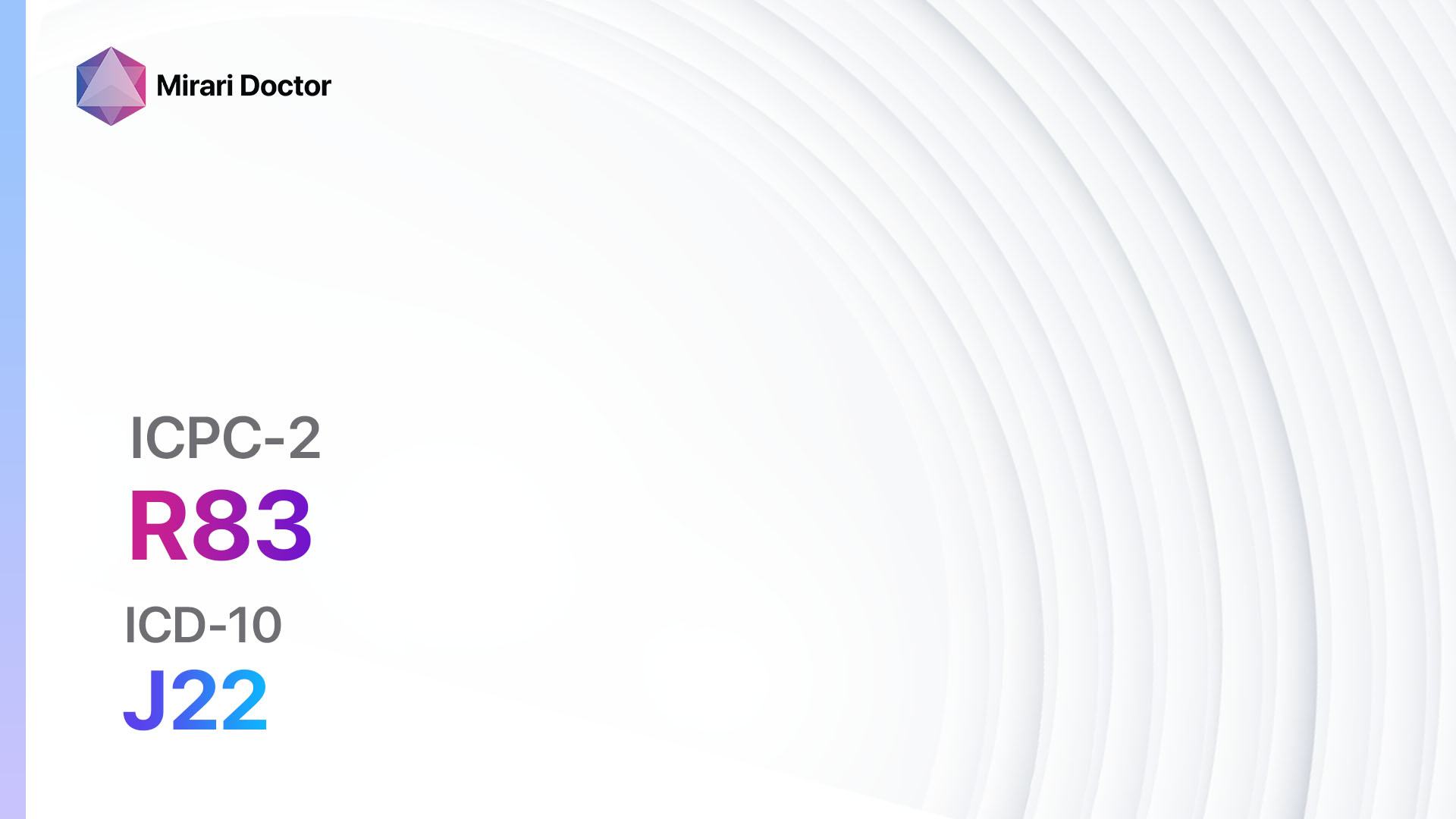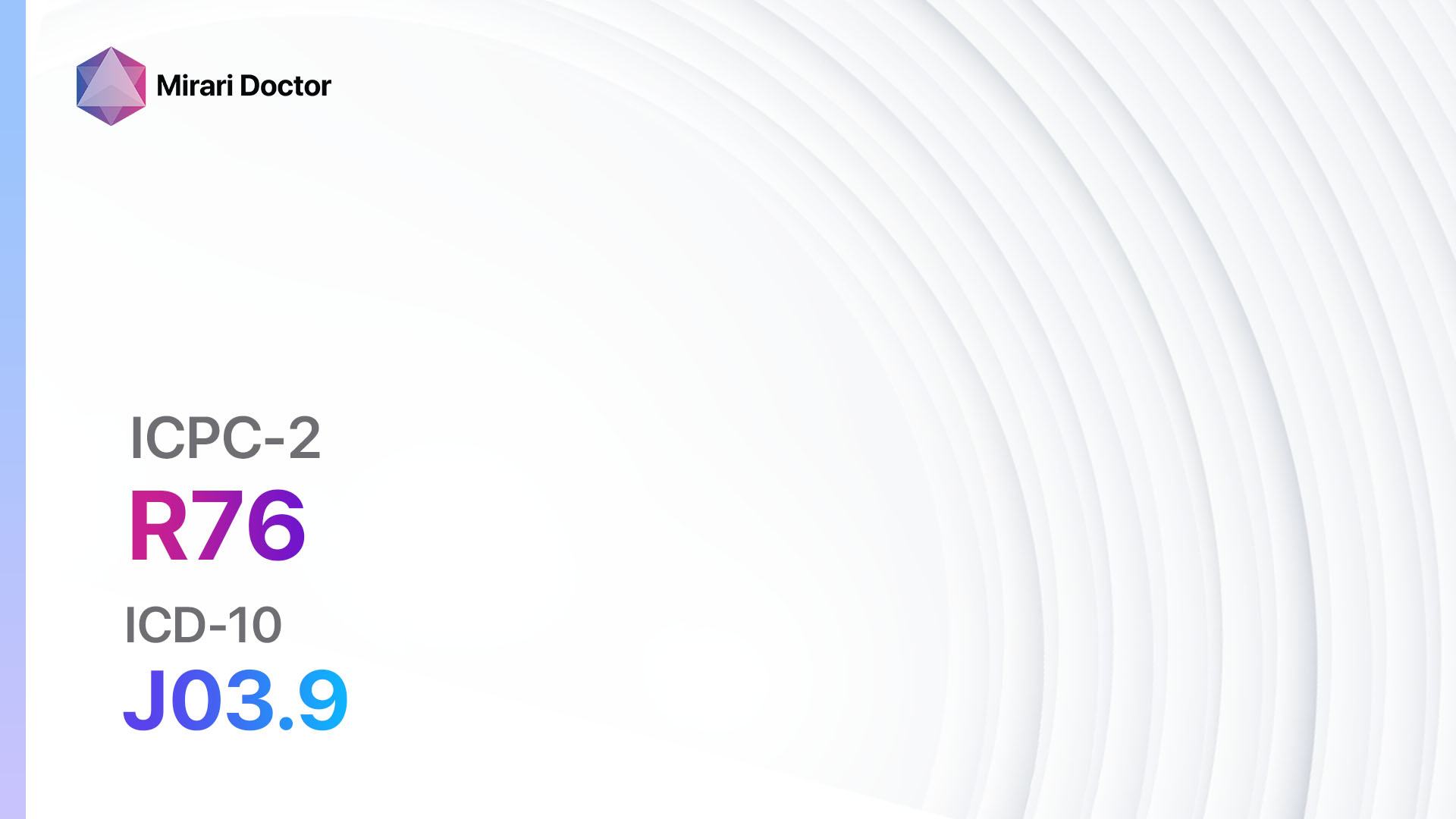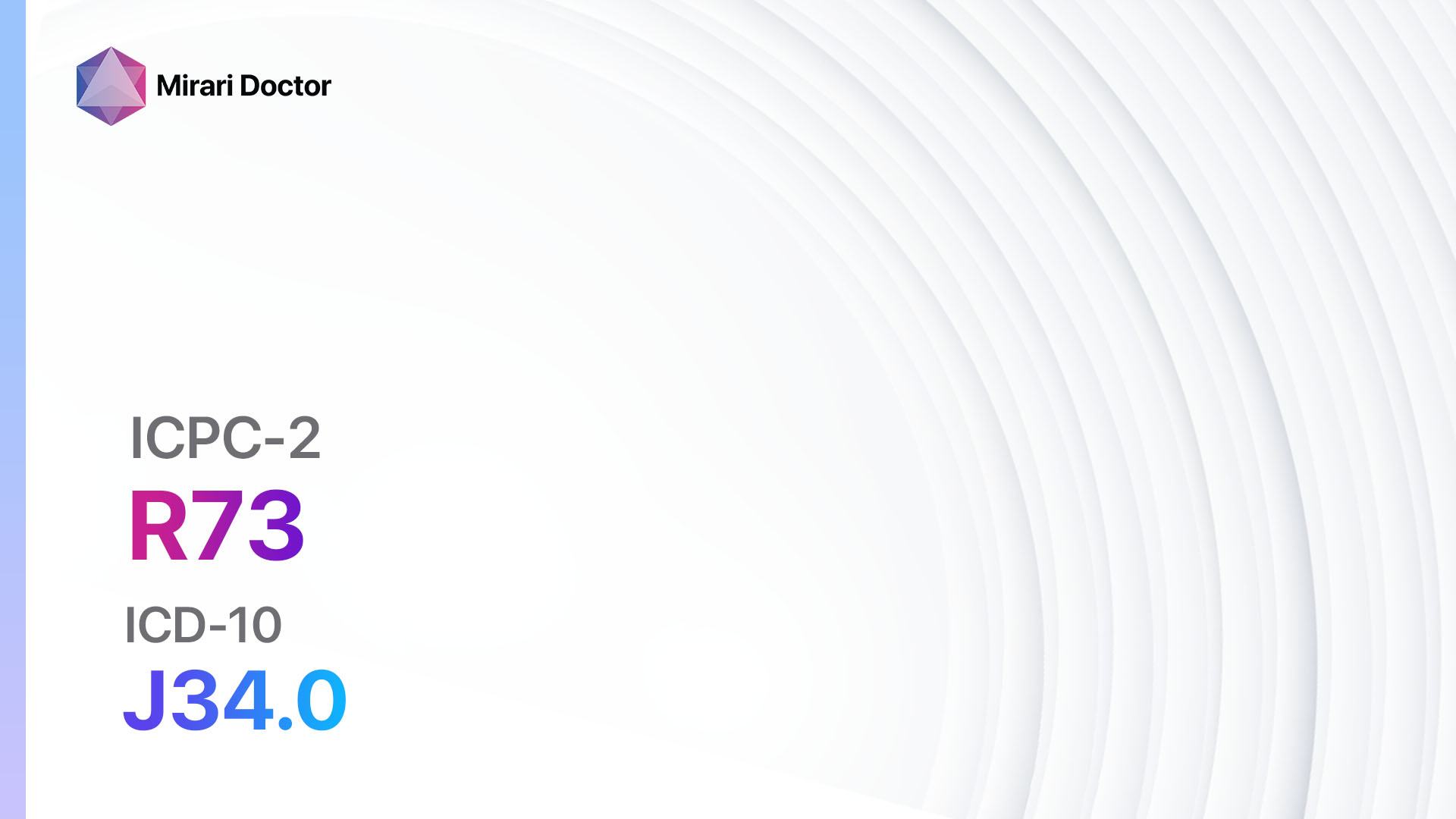
Introduction
Voice symptoms or complaints refer to any abnormality or discomfort related to the voice, such as hoarseness, changes in pitch or volume, or difficulty speaking. These symptoms can significantly impact a person’s quality of life and may be indicative of an underlying medical condition.[1] The aim of this guide is to provide healthcare professionals with a comprehensive approach to diagnosing and managing voice symptoms.
Codes
- ICPC-2 Code: R23 Voice symptom/complaint[2]
- ICD-10 Code: R49.8 Other and unspecified voice disturbances[3]
Symptoms
- Hoarseness: A rough or raspy voice that may be accompanied by vocal fatigue or strain.[4]
- Changes in pitch or volume: The voice may sound higher or lower in pitch, or softer or louder in volume.
- Vocal fatigue: A feeling of tiredness or strain in the voice, especially after prolonged use.
- Difficulty speaking: The person may experience difficulty producing sounds or words, or may have a weak or breathy voice.
- Pain or discomfort: The person may experience pain or discomfort in the throat or vocal cords.[5]
Causes
- Acute laryngitis: Inflammation of the vocal cords due to viral or bacterial infections.
- Chronic laryngitis: Long-term inflammation of the vocal cords, often due to excessive voice use or acid reflux.
- Vocal cord nodules or polyps: Noncancerous growths on the vocal cords, usually caused by vocal abuse or chronic irritation.
- Vocal cord paralysis: Damage or dysfunction of the nerves that control the vocal cords, often due to surgery or neurological conditions.
- Gastroesophageal reflux disease (GERD): Stomach acid refluxing into the throat, causing irritation and inflammation of the vocal cords.
- Smoking: Tobacco smoke can irritate the vocal cords and lead to voice changes.
- Allergies or sinusitis: Postnasal drip or inflammation in the throat can affect voice quality.
- Vocal cord hemorrhage: Bleeding into the vocal cords, usually caused by excessive voice use or trauma.
- Vocal cord cancer: Rare, but can cause voice changes or hoarseness.[6]
Diagnostic Steps
Medical History
- Inquire about the duration and nature of the voice symptoms.
- Ask about any recent illnesses, allergies, or exposure to irritants.
- Assess the patient’s occupation and vocal habits.
- Inquire about any history of smoking, alcohol consumption, or drug use.
- Ask about any previous voice-related issues or treatments.[7]
Physical Examination
- Inspect the throat and oral cavity for any signs of inflammation, masses, or lesions.
- Palpate the neck for any enlarged lymph nodes or thyroid abnormalities.
- Evaluate the patient’s breathing pattern and voice quality during conversation.
- Perform a laryngoscopy to visualize the vocal cords and assess their movement and appearance.[8]
Laboratory Tests
- Complete blood count (CBC): To assess for signs of infection or inflammation.
- Thyroid function tests: To evaluate thyroid function, as thyroid disorders can affect voice quality.
- Allergy testing: To identify any allergens that may be contributing to voice symptoms.
- pH monitoring: To assess for acid reflux, which can cause vocal cord irritation.[9]
Diagnostic Imaging
- Laryngeal ultrasound: To evaluate the structure and movement of the vocal cords.
- CT scan or MRI: To assess for any structural abnormalities or masses in the throat or neck.[10]
Other Tests
- Voice analysis: Objective assessment of voice quality, pitch, and volume using specialized software.
- Videostroboscopy: A detailed examination of the vocal cords using a strobe light and high-speed camera.
- Electromyography (EMG): To evaluate the function of the muscles that control the vocal cords.
- Biopsy: If a suspicious lesion or mass is identified, a biopsy may be necessary to rule out cancer.
Follow-up and Patient Education
- Schedule a follow-up appointment to review test results and discuss treatment options.
- Provide the patient with information on voice hygiene, such as avoiding excessive voice use, staying hydrated, and avoiding irritants like smoking or excessive alcohol consumption.
- Refer the patient to a speech-language pathologist for voice therapy if necessary.
- Educate the patient about the importance of regular follow-up appointments and seeking medical attention if symptoms worsen or persist.
Possible Interventions
Traditional Interventions
Medications:
Top 5 drugs for voice symptoms/complaints:
- Corticosteroids (e.g., Prednisone, Dexamethasone):
- Cost: Generic versions can be $3-$50/month.
- Contraindications: Active infections, systemic fungal infections.
- Side effects: Increased appetite, weight gain, mood changes.
- Severe side effects: Adrenal suppression, osteoporosis, increased risk of infections.
- Drug interactions: Nonsteroidal anti-inflammatory drugs (NSAIDs), anticoagulants.
- Warning: Long-term use may require gradual tapering to avoid adrenal insufficiency.
- Proton pump inhibitors (e.g., Omeprazole, Esomeprazole):
- Cost: Generic versions can be $5-$50/month.
- Contraindications: Hypersensitivity to proton pump inhibitors.
- Side effects: Headache, diarrhea, abdominal pain.
- Severe side effects: Clostridium difficile infection, vitamin B12 deficiency.
- Drug interactions: Clopidogrel, antiretroviral drugs.
- Warning: Long-term use may increase the risk of fractures and certain infections.
- Antihistamines (e.g., Cetirizine, Loratadine):
- Cost: Generic versions can be $5-$30/month.
- Contraindications: Hypersensitivity to antihistamines.
- Side effects: Drowsiness, dry mouth, blurred vision.
- Severe side effects: Severe allergic reactions, difficulty urinating.
- Drug interactions: Sedatives, alcohol.
- Warning: May cause drowsiness, avoid activities requiring mental alertness.
- Antibiotics (e.g., Amoxicillin, Azithromycin):
- Cost: Generic versions can be $5-$50/month.
- Contraindications: Hypersensitivity to antibiotics.
- Side effects: Nausea, diarrhea, rash.
- Severe side effects: Severe allergic reactions, Clostridium difficile infection.
- Drug interactions: Warfarin, oral contraceptives.
- Warning: Complete the full course of antibiotics as prescribed.
- Antireflux medications (e.g., Ranitidine, Famotidine):
- Cost: Generic versions can be $5-$30/month.
- Contraindications: Hypersensitivity to antireflux medications.
- Side effects: Headache, dizziness, constipation.
- Severe side effects: Severe allergic reactions, liver dysfunction.
- Drug interactions: Clopidogrel, antacids.
- Warning: Long-term use may increase the risk of certain infections.
Alternative Drugs:
- Mucolytics (e.g., Acetylcysteine): May help thin mucus and improve voice quality.
- Antidepressants (e.g., Amitriptyline, Sertraline): Can be used for voice symptoms related to psychological factors.
- Anticholinergics (e.g., Ipratropium bromide): May help reduce excessive mucus production.
- Antiviral medications (e.g., Oseltamivir): If voice symptoms are due to a viral infection.
- Antifungal medications (e.g., Fluconazole): If voice symptoms are due to a fungal infection.
Surgical Procedures:
- Vocal cord surgery: Various surgical techniques can be used to remove vocal cord nodules, polyps, or tumors.
- Cost: $5,000 to $20,000.
- Injection laryngoplasty: Involves injecting a filler material into the vocal cords to improve voice quality.
- Cost: $2,000 to $5,000.
- Vocal cord augmentation: Involves injecting a substance into the vocal cords to improve vocal cord closure and voice quality.
- Cost: $2,000 to $5,000.
Alternative Interventions
- Voice therapy: Working with a speech-language pathologist to learn proper vocal techniques and exercises.
- Cost: $100-$200 per session.
- Acupuncture: May help improve vocal cord function and reduce muscle tension.
- Cost: $60-$120 per session.
- Herbal remedies: Some herbs, such as licorice root or slippery elm, may have soothing effects on the throat.
- Cost: Varies depending on the specific herb or supplement.
- Steam inhalation: Inhaling steam from hot water or a humidifier can help moisturize the vocal cords.
- Cost: Minimal, if using a home humidifier or hot water.
- Hydration and vocal rest: Adequate hydration and resting the voice can help reduce inflammation and promote healing.
- Cost: Minimal.
Lifestyle Interventions
- Avoidance of irritants: Encourage the patient to avoid smoking, secondhand smoke, and other irritants that can affect the vocal cords.
- Hydration: Drinking plenty of water and avoiding excessive caffeine or alcohol can help keep the vocal cords hydrated.
- Proper vocal techniques: Teach the patient proper breathing and vocal techniques to reduce strain on the vocal cords.
- Stress management: Stress can contribute to voice symptoms, so encourage the patient to engage in stress-reducing activities such as exercise, meditation, or counseling.
- Dietary modifications: Encourage the patient to avoid spicy or acidic foods that can exacerbate acid reflux and vocal cord irritation.
It is important to note that the cost ranges provided are approximate and may vary depending on the location and availability of the interventions.
Mirari Cold Plasma Alternative Intervention
Understanding Mirari Cold Plasma
- Safe and Non-Invasive Treatment: Mirari Cold Plasma is a safe and non-invasive treatment option for various skin conditions. It does not require incisions, minimizing the risk of scarring, bleeding, or tissue damage.
- Efficient Extraction of Foreign Bodies: Mirari Cold Plasma facilitates the removal of foreign bodies from the skin by degrading and dissociating organic matter, allowing easier access and extraction.
- Pain Reduction and Comfort: Mirari Cold Plasma has a local analgesic effect, providing pain relief during the treatment, making it more comfortable for the patient.
- Reduced Risk of Infection: Mirari Cold Plasma has antimicrobial properties, effectively killing bacteria and reducing the risk of infection.
- Accelerated Healing and Minimal Scarring: Mirari Cold Plasma stimulates wound healing and tissue regeneration, reducing healing time and minimizing the formation of scars.
Mirari Cold Plasma Prescription
Video instructions for using Mirari Cold Plasma Device – R23 Voice symptom/complaint (ICD-10:R49.8)
| Mild | Moderate | Severe |
| Mode setting: 2 (Wound Healing) Location: 6 (Throat, Lymphatic & Thyroid) Morning: 15 minutes, Evening: 15 minutes |
Mode setting: 2 (Wound Healing) Location: 6 (Throat, Lymphatic & Thyroid) Morning: 30 minutes, Lunch: 30 minutes, Evening: 30 minutes |
Mode setting: 2 (Wound Healing) Location: 6 (Throat, Lymphatic & Thyroid) Morning: 30 minutes, Lunch: 30 minutes, Evening: 30 minutes |
| Mode setting: 7 (Immunotherapy) Location: 7 (Neuro system & ENT) Morning: 15 minutes, Evening: 15 minutes |
Mode setting: 7 (Immunotherapy) Location: 7 (Neuro system & ENT) Morning: 30 minutes, Lunch: 30 minutes, Evening: 30 minutes |
Mode setting: 7 (Immunotherapy) Location: 7 (Neuro system & ENT) Morning: 30 minutes, Lunch: 30 minutes, Evening: 30 minutes |
| Mode setting: 7 (Immunotherapy) Location: 1 (Sacrum) Morning: 15 minutes, Evening: 15 minutes |
Mode setting: 7 (Immunotherapy) Location: 1 (Sacrum) Morning: 30 minutes, Lunch: 30 minutes, Evening: 30 minutes |
Mode setting: 7 (Immunotherapy) Location: 1 (Sacrum) Morning: 30 minutes, Lunch: 30 minutes, Evening: 30 minutes |
| Total Morning: 45 minutes approx. $7.50 USD, Evening: 45 minutes approx. $7.50 USD |
Total Morning: 90 minutes approx. $15 USD, Lunch: 90 minutes approx. $15 USD, Evening: 90 minutes approx. $15 USD |
Total Morning: 90 minutes approx. $15 USD, Lunch: 90 minutes approx. $15 USD, Evening: 90 minutes approx. $15 USD |
| Usual treatment for 7-60 days approx. $105 USD – $900 USD | Usual treatment for 6-8 weeks approx. $1,890 USD – $2,520 USD |
Usual treatment for 3-6 months approx. $4,050 USD – $8,100 USD
|
 |
|
Use the Mirari Cold Plasma device to treat Voice symptom/complaint effectively.
WARNING: MIRARI COLD PLASMA IS DESIGNED FOR THE HUMAN BODY WITHOUT ANY ARTIFICIAL OR THIRD PARTY PRODUCTS. USE OF OTHER PRODUCTS IN COMBINATION WITH MIRARI COLD PLASMA MAY CAUSE UNPREDICTABLE EFFECTS, HARM OR INJURY. PLEASE CONSULT A MEDICAL PROFESSIONAL BEFORE COMBINING ANY OTHER PRODUCTS WITH USE OF MIRARI.
Step 1: Cleanse the Skin
- Start by cleaning the affected area of the skin with a gentle cleanser or mild soap and water. Gently pat the area dry with a clean towel.
Step 2: Prepare the Mirari Cold Plasma device
- Ensure that the Mirari Cold Plasma device is fully charged or has fresh batteries as per the manufacturer’s instructions. Make sure the device is clean and in good working condition.
- Switch on the Mirari device using the power button or by following the specific instructions provided with the device.
- Some Mirari devices may have adjustable settings for intensity or treatment duration. Follow the manufacturer’s instructions to select the appropriate settings based on your needs and the recommended guidelines.
Step 3: Apply the Device
- Place the Mirari device in direct contact with the affected area of the skin. Gently glide or hold the device over the skin surface, ensuring even coverage of the area experiencing.
- Slowly move the Mirari device in a circular motion or follow a specific pattern as indicated in the user manual. This helps ensure thorough treatment coverage.
Step 4: Monitor and Assess:
- Keep track of your progress and evaluate the effectiveness of the Mirari device in managing your Voice symptom/complaint. If you have any concerns or notice any adverse reactions, consult with your health care professional.
Note
This guide is for informational purposes only and should not replace the advice of a medical professional. Always consult with your healthcare provider or a qualified medical professional for personal advice, diagnosis, or treatment. Do not solely rely on the information presented here for decisions about your health. Use of this information is at your own risk. The authors of this guide, nor any associated entities or platforms, are not responsible for any potential adverse effects or outcomes based on the content.
Mirari Cold Plasma System Disclaimer
- Purpose: The Mirari Cold Plasma System is a Class 2 medical device designed for use by trained healthcare professionals. It is registered for use in Thailand and Vietnam. It is not intended for use outside of these locations.
- Informational Use: The content and information provided with the device are for educational and informational purposes only. They are not a substitute for professional medical advice or care.
- Variable Outcomes: While the device is approved for specific uses, individual outcomes can differ. We do not assert or guarantee specific medical outcomes.
- Consultation: Prior to utilizing the device or making decisions based on its content, it is essential to consult with a Certified Mirari Tele-Therapist and your medical healthcare provider regarding specific protocols.
- Liability: By using this device, users are acknowledging and accepting all potential risks. Neither the manufacturer nor the distributor will be held accountable for any adverse reactions, injuries, or damages stemming from its use.
- Geographical Availability: This device has received approval for designated purposes by the Thai and Vietnam FDA. As of now, outside of Thailand and Vietnam, the Mirari Cold Plasma System is not available for purchase or use.
References
- Schwartz SR, et al. Clinical practice guideline: hoarseness (dysphonia). Otolaryngol Head Neck Surg. 2009;141(3 Suppl 2):S1-S31.
- World Health Organization. International Classification of Primary Care, Second edition (ICPC-2).
- World Health Organization. International Statistical Classification of Diseases and Related Health Problems 10th Revision (ICD-10).
- Colton RH, et al. Understanding Voice Problems: A Physiological Perspective for Diagnosis and Treatment. 4th ed. Lippincott Williams & Wilkins; 2011.
- Roy N, et al. Voice disorders in the general population: prevalence, risk factors, and occupational impact. Laryngoscope. 2005;115(11):1988-1995.
- Sataloff RT. Professional Voice: The Science and Art of Clinical Care. 4th ed. Plural Publishing; 2017.
- Rubin JS, et al. Diagnosis and Treatment of Voice Disorders. 4th ed. Plural Publishing; 2014.
- Rosen CA, et al. Laryngeal videostroboscopy and voice evaluation. Otolaryngol Clin North Am. 2000;33(4):719-729.
- Koufman JA, et al. Laryngopharyngeal reflux: position statement of the committee on speech, voice, and swallowing disorders of the American Academy of Otolaryngology-Head and Neck Surgery. Otolaryngol Head Neck Surg. 2002;127(1):32-35.
- Rzepakowska A, et al. The role of imaging techniques in the diagnosis of voice disorders. Otolaryngol Pol. 2018;72(6):1-8.
Related articles
Made in USA




























